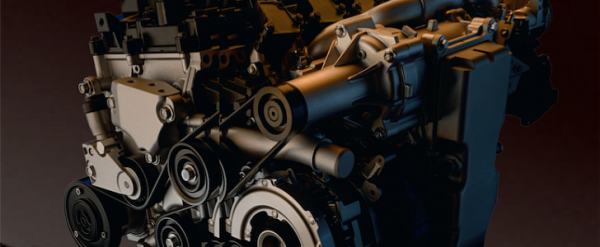
Still, the gargantuan plans to shift to electricity will probably not exterminate the good old combustion engine (ICE) anytime soon. Most of the carmakers planning an electric revolution are also hard at work making existing ICE more powerful and less pollutant, hinting to the fact the old fashion way of making a car run will not become obsolete.
A limited few auto companies have decided to make a stand against electrification and, despite going with the flow in the general direction of the rest of the pack, they keep pumping ideas and money into the development of better combustion engines.
Mazda is one of this group. Not only does it develop new ICE engines, but has also tried over the course of last year to convince the world that electric cars are, from at least one perspective, far worse for the environment than current and future ICE engines.
Mazda’s proposal for a greener future is an evolution of its line of Skyactiv engines, one they call X.
Skyactiv is a line of technologies, including engines, that debuted at Mazda in 2012 with the stated goal of making ICE more efficient and more powerful. To date, Mazda went through two variants of these engines, one gasoline and one diesel (G and D), and introduced the third, X, in 2018.
Skyactiv-X is a gasoline engine that uses at least partially the compression technology usually found in a diesel engine.
As surely most of you already know, gasoline engines work by having the fuel mixture being lit up by use of a spark plug. Unlike them, diesel power plants operate by having the fuel compressed to such a degree that it heats up enough to ignite, needing no spark to literally explode.
Various similar technologies have been tried before, the most high-profile of all being the Mercedes Benz DiesOtto engine, an experimental 4 cylinder in-line 1.8-liter engine (238 horsepower and 400 Nm of torque) first shown in 2007.
Mazda’s idea works somewhat similar to that of the DiesOtto. Mercedes called its approach for this engine Homogeneous Charge Compression Ignition (HCCI), while Mazda’s is called Spark Controlled Compression Ignition (SPCCI).
Both technologies, however, combine the kick provided by a good-old spark with the punch of hard-pressed fuel. For the Skyactiv-X, that means a spark is used to ignite only a small, dense amount of the fuel-air mix in the cylinder.
Once this small amount is ignited, the temperature and pressure inside the cylinder increase to such a degree that the rest of the fuel gets off purely because of combining these two factors.
This approach translates into a faster and more complete burn of the fuel, which in turn means both more power and less harmful emissions than in conventional engines.
According to the Japanese, the 2.0-liter variant of the Skyactiv-X will deliver 30 percent more torque than the current G and ten percent more power than the D.
Mazda says the deployment of the X in its cars will help it reduce well-to-wheel carbon dioxide emissions to 50 percent of 2010 levels by 2030 and by 90 percent by 2050.
The carmaker does not say how this new approach to building an engine will affect its lifespan. When showing the DiesOtto, Mercedes warned that high temperatures will wear down the engine faster than usual.
The Mazda Skyactiv-X is already deployed in several cars, the most recent of which being the recently unveiled Mazda3. The technology is however young enough to make it impossible to check whether Mazda's claims are real or not.








